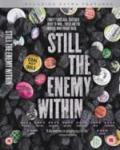Film review of the documentary about the 1984-1985 British Miner’s strike, written and directed by Owen Gower.
Director: Owen Gower. Bad Bonobo (15)
Cast and credits
Producers: Sinead Kirwan, Mark Lacey.
Writer: Owen Gower.
Camera: Malcolm Hadley.
Music: Rael Jones.
Norman Strike, Paul Symonds, Steve Hammill, Mike Jackson, Jo Henry et al.
Synopsis
This documentary follows the highs and lows of a life-changing year – the British Miners’ Strike, 1984-1985. Using interviews and rare, never before seen archive, the film draws together personal experiences and not those of experts or politicians to take the audience on a journey through the dramatic events of that year.
Review
There have been a number of films about the Miners’ Strike of the mid 1980’s, from a recreation of the vicious Battle of Orgreave (2001) by conceptual artist Jeremy Deller and director Mike Figgis, to the more recent Pride (2013) which dramatises how a group of lesbian and gay activists fought their own battle to support a community of Welsh miners during the strike, and which I happily enjoyed seeing at my local film club in Stony Stratford (film review of Pride).
I was only five years old at the time of actual strike (although, given the length of the protest, the government’s intractable position and the violence involved, it was more akin to a war) so I have only a dim recollection of what happened, with little or no appreciation of the politics behind the events. This documentary reminds people such as myself of how monumental for British history the strike was by hearing directly from the grass roots level people who were involved, not the politicians in charge or experts they hired to effectively obliterate trade unionism in this country but the miners, their wives and community leaders who were there on the picket lines or supporting behind it.
And what an engaging group they are. Intelligent, verbose, humorous, authoritative, they provide vivid descriptions to the still eye-opening news footage that accompanies their recollections (right at the beginning we see an elderly woman being man handled by a policeman). From Symonds’ viscerally accurate opening description of what one would first experience when entering a coal mine, we feel how harsh and unrelenting a life this was. This was a career that literally turned boys into men.
But his words are, like those of his peers, tinged with the utmost respect and affection for their profession. These ‘boots on the ground’ accounts also allow the filmmakers to peer beneath the surface of the flashpoints of history and reveal the smaller, almost inconsequential details that would otherwise be lost amidst grand political recall.
Such as the ingenious tricks the miners used to overcome police blockades of their movements. As groups of more than two men in cars travelling on the A1 into Nottinghamshire were met with suspicion, some would hide in the boot, or even get out down the road and dress up as joggers, getting back into the cars after they had passed the authorities.
This seam of humour cuts throughout the film, none more so than when the aptly named Strike reveals a drunken encounter on The Old Grey Whistle Test with Jools Holland and struggling to get the police to accept his name as being real. Why Strike never carved out a new career as a stand-up may only ever be known to him, but there is still ample time if he wished to try.
With documentary, there is a danger the filmmakers can employ a seductive editorial sleight of hand with a convenient flow of narrative and images to lull the audience toward a specific viewpoint, but thankfully the producers here have opted for a more straightforward and honest construction of past events. Still the Enemy Within has a less forced, natural feel to it. It is more factual current affairs report than documentary.
The only minus point is that only one point of view is expressed throughout. Despite the importance of the subject matter and the clarity of the storytellers, it does feel like one is being thumped repeatedly with the hammer of truth and justice. Although the point here is that other films and TV programmes have allowed dissenting opinions to be expressed, there is still a lack of balance to the overall film.
Mention is made of the miners who crossed the picket line and faced (in some cases, still face) derision and ostracisation from their communities, but yet we hear nothing of their experiences or even if the filmmakers had tried to include them. This could however form the basis of another film itself as producer Lacey commented, there are hundreds more tales to tell from this one point in our history.


